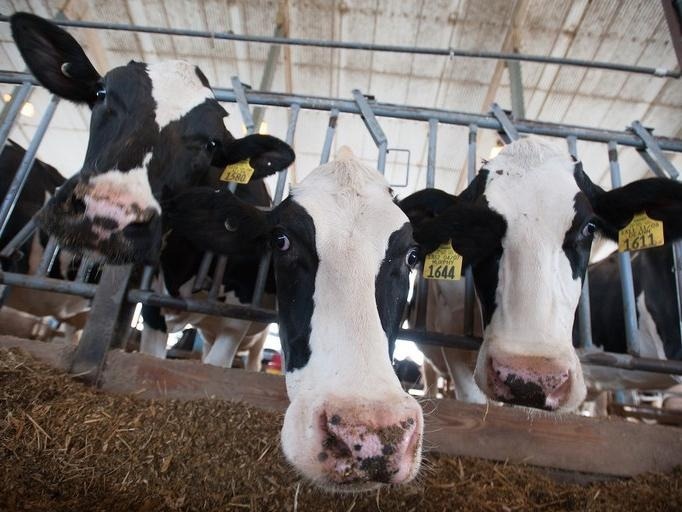Milk production might suffer when dairy cows are fed diets with lower protein to prevent environmental nitrogen pollution from their manure, such as nitrate leaching, nutrient-laden run-off, and ammonia volatilization. Histidine supplementation could help in maintaining and even boosting milk and milk-protein production.
 Limited histidine was not considered a challenge for dairy cows fed typical North American diets until research conducted in Alexander Hristov’s lab in the College of Agricultural Sciences at Penn State a few years ago revealed the problem. Now, the team has found that supplemental histidine may help milk production in cattle fed low-protein diets. Image Credit: Penn State
Limited histidine was not considered a challenge for dairy cows fed typical North American diets until research conducted in Alexander Hristov’s lab in the College of Agricultural Sciences at Penn State a few years ago revealed the problem. Now, the team has found that supplemental histidine may help milk production in cattle fed low-protein diets. Image Credit: Penn State
This is the finding of a new study led by Alexander Hristov, a Penn State distinguished professor of dairy nutrition and a prominent specialist on greenhouse gas and other emissions from ruminant animals. The findings were just published in the Journal of Dairy Science.
According to Hristov, histidine is an important amino acid for protein synthesis, which is the process by which molecules that assist in sustaining biological functioning and health in humans and animals, including dairy cows, are created. Previous European research has demonstrated that low histidine levels can restrict milk output in dairy cows fed diets based on grass silage, the primary forage in Northern Europe.
Before studies undertaken at Hristov’s group in the College of Agricultural Sciences at Penn State a few years ago made the issue of limited histidine apparent for dairy cows fed conventional North American diets clear, the issue was not considered a concern.
In those studies, when cows were fed diets with lower protein levels intended to reduce nitrogen losses and ammonia emissions from dung, blood histidine concentrations considerably decreased.
Histidine is crucial to maintaining milk production and milk protein content when cows are fed diets with low protein concentrations, according to an array of research that was published in the Journal of Dairy Science. Hristov pointed out that lactating mammals need a lot of amino acids to sustain milk production by the mammary glands during lactation. A crucial function of the lactating mammary gland is amino acid metabolism.
The culmination of this research was the recently published meta-analysis of 17 studies which concluded that histidine supplementation of dairy cow diets increased feed dry matter intake, milk yield and milk protein concentration. Notably, and as Penn State research has shown, the increase in milk protein concentration with histidine supplementation was up to four times greater for cows fed diets that had lowered protein content than diets formulated to provide adequate protein intake, according to diet-formulation models.”
Alexander N. Hristov, Ph.D., Distinguished Professor of Dairy Nutrition, The Pennsylvania State University
According to Hristov, histidine is distinct from the other essential amino acids in that the body has stores of the amino acid that can be used to make up for temporary shortages. Therefore, long-term, continuous-design tests should be conducted to examine the effects of histidine in dairy cows.
Hristov added, “Further, microbial protein synthesized in the rumen—which is the main source of amino acids for the cow—is low in histidine, relative to other potentially milk-limiting amino acids. That supports our hypothesis that histidine becomes the first limiting amino acid when cows are fed low-protein diets. So, the role of microbial protein as a source of amino acids for milk protein synthesis and body functions becomes even more critical.”
Source:
Journal reference:
Räisänen, S. E., et al. (2023). Lactational performance effects of supplemental histidine in dairy cows: A meta-analysis. Journal of Dairy Science. doi.org/10.3168/jds.2022-22966